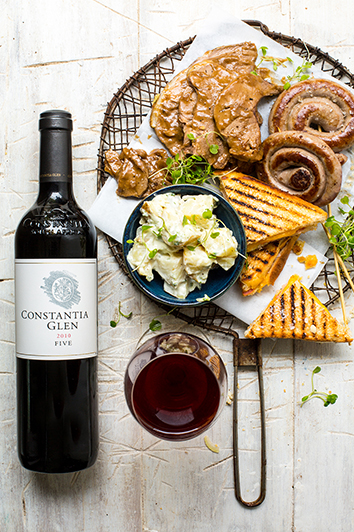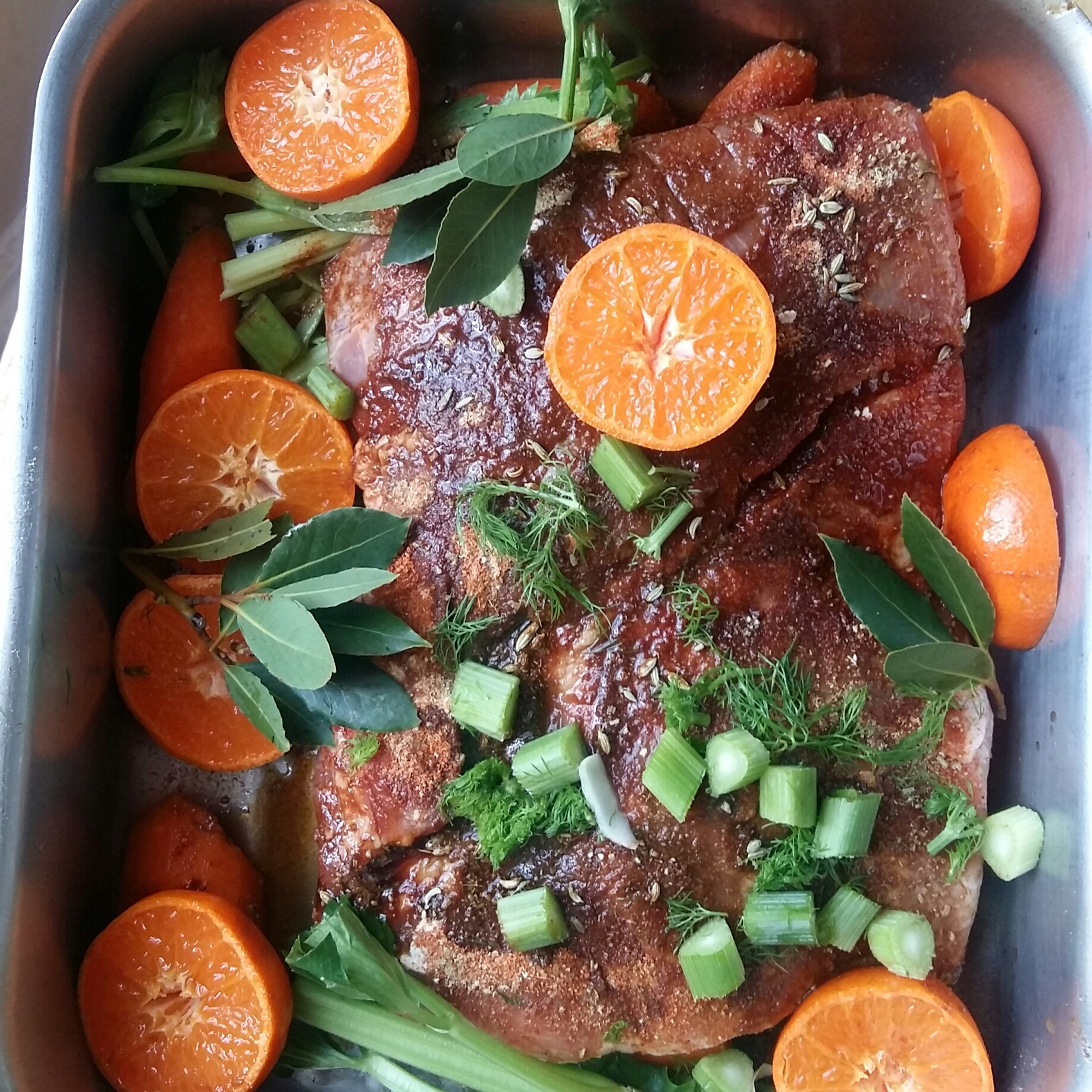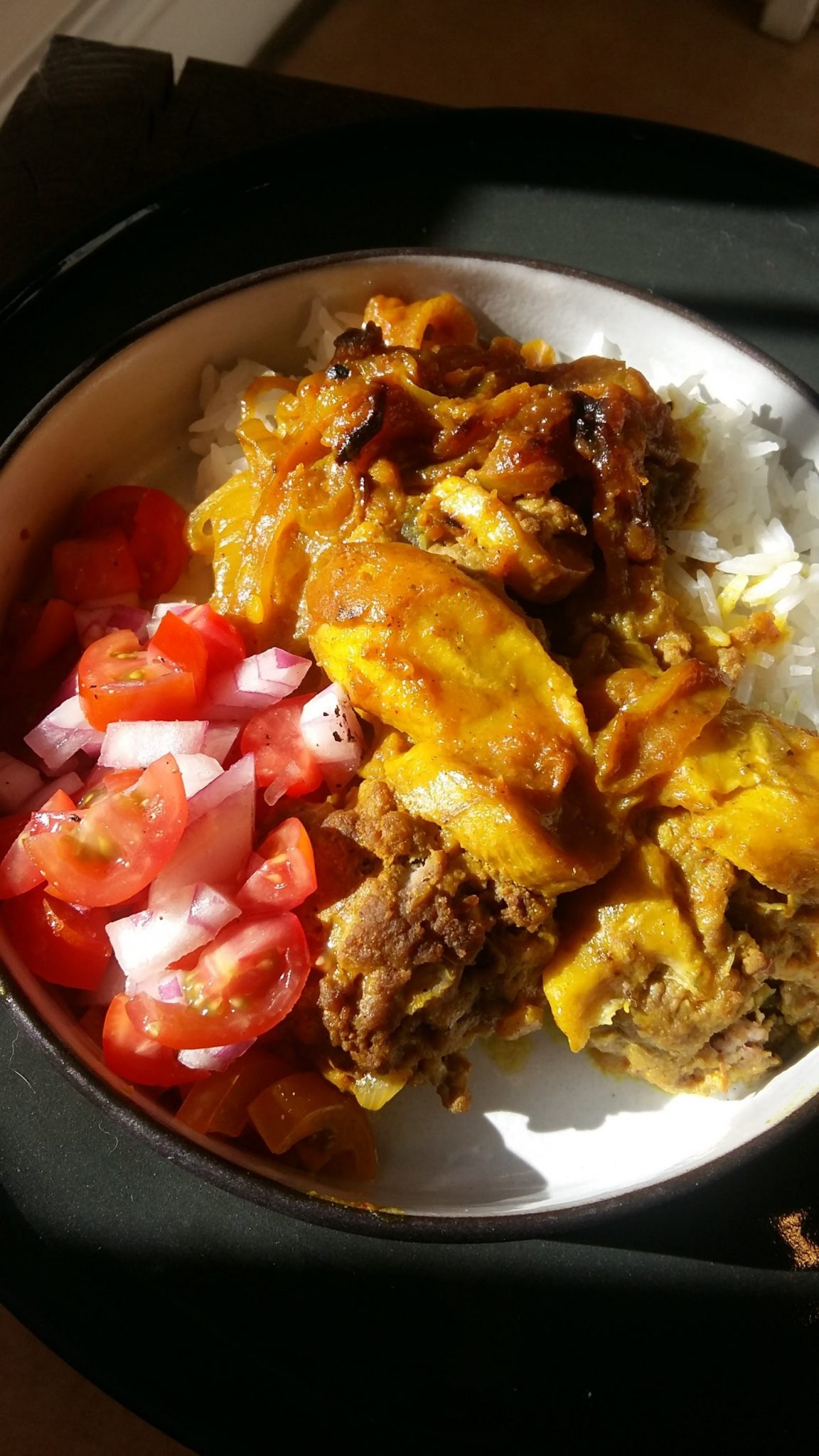I like my seafood simple and prawns are no exception. Peri-peri is one of my favourite ways to cook and eat prawns, and I can vividly recall the very first time I had it, aged 5, on holiday in Durban. The sauce was so violently hot that tears streamed down my face as I was eating, but it was just so darn good I polished the plate and then begged some off my dad’s plate too. I’ve been hooked on peri-peri ever since.
The nice thing about making peri-peri at home is that you can dial the heat up or down to your own liking. Use real dried pili-pili chillies, cayenne pepper, chopped red Thai chillies, chilli paste or whatever you prefer. Just not bottled peri-peri sauce, I beg you. Prawns are precious, and all bottled sauces contain additives and preservatives that will taint the taste of your sauce. Besides, whipping up a peri-peri sauce is so quick and easy, why bother with bought bottled sauces anyway?
Now, there are about as many different peri-peri prawn recipes as there are cooks. And everyone thinks their own sauce is the best. Of course! That is as it should be. I’m not saying mine is the World’s Number One, but it is my own favourite, and the one I prefer. It also goes very nicely with the Lanzerac sauvignon blanc 2015 my friend Zelda Furstenberg sent me as a gift, although beer, riesling and chardonnay are pretty sexy sipping mates for chilli prawns too. To read more about this silky, fresh sauvignon blanc, click here Lanzerac sauvignon blanc
Let’s talk about prawns, chilli, lemon and wine. Prawns have a sweet, delicate meat, and generally need a very short cooking time, whether that’s on the braai, in the oven or on the stovetop in a frying pan. Even when you are using them raw in a ceviche, 30 minutes tops marinating time should do. Marinating prawns before cooking isn’t really necessary and whatever you do, don’t ever add lemon or any acid to a marinade for prawns, as this will ‘cook’ the meat and turn it rubbery.
Prawns are contentious due to production methods, especially in the Far East, where most of the prawns imported into South Africa comes from. Due to this, my household put a blanket ban on eating prawns which caused me no end of regret, but I don’t particularly fancy ingesting a cocktail of heavy metals, tetracyclines and sulfas with my food. Since prawns are hardly a South African staple, you can and should ask about the source of your prawns before buying.
If you’ve bought decent, sustainably wild-caught pink Argentinian prawns from the icy waters off Patagonia’s coast, you’ve done well. The GREAT news is that Food Lovers Market sells these beauties, at the pocket-friendly price of R185 a box, in the shell with heads on. The meat of the Patagonian prawn is akin to crayfish and the shell somewhat thicker, which adds a lot of flavour to the sauce. Also, they need a very brief cook, otherwise the flesh turns mushy. It also loves a dash of lime or lemon, and chilli suits it particularly well.
So does sauvignon blanc, surprise, surprise. Fresh coriander is a herb that happily pairs with both prawns and sauvignon blanc, so if that’s your choice of tipple with your prawns, feel free to add a generous handful to your sauce. Use tomato judiciously in this sauce when you want to drink sauvignon blanc, preferably tomato passata, Pesto Princess’ new tomato pesto or your own, rehydrated sundried tomato paste. NOT tinned tomatoes – this has a really bad metallic clash with sauvignon blanc. I have even used straight ketchup or tomato cocktail in my peri-peri sauce, and it worked beautifully by being both slightly sweet and concentrated in flavour and texture. I usually add a dash of top quality paprika to my peri-peri sauce, but have found that this is not a great idea when paired with sauvignon blanc – the bitterness of the paprika fights with the acidity and minerality of the wine and flattens it.
Use preciously little lemon juice. Really. Just take a cut half lemon in your hand and give it one, brief, hard squeeze into the sauce at the start. Seriously, that’s it. The trick of a good peri-peri is the balance between sweet, sour, salty and hot. This is why you should make the sauce separately after flash-frying your prawns, only adding the prawns for a brief 3 minutes towards the end. At its best, peri-peri is just 1) chilli 2) garlic 3) lemon 4) butter or oil – use a neutral-tasting oil like sunflower, peanut or grapeseed and 5) salt.
Salt is crucial when cooking fish and seafood, in my opinion, and since you’re preparing a special dish, go all out and use gentle, pure sea salt flakes here, like Maldon, or Oryx Kalahari salt. In fact, make each and every ingredient you use for this recipe the very best you can afford, and that includes the wine.
One final tip: when defrosting your prawns (all prawns sold are blast frozen on the ship at sea, unless of course you’re holidaying on the coast somewhere exotic like Mozambique and Thailand), preferably do so in a bowl in the fridge overnight, or else in bowl of salted cold water. Never put your prawns in fresh unsalted water to thaw. Never. BECAUSE I SAY SO. (It spoils the lovely briny, ocean-y taste.)
Now. Let’s get cooking, shall we?
PERI-PERI PRAWNS À LA SONIA
Serves 4 as a starter, 2-3 as a main
Ingredients:
500 g frozen Argentinian or other top quality prawns
1/4 cup (60 ml) neutral tasting oil, like sunflower, peanut or grapeseed
1 t (5 ml) chopped red chilli or cayenne/6 crushed dried birds’ eye chillies or to taste
2-3 cloves fresh garlic, finely chopped. Use fresh garlic, as bottled pre-crushed garlic will totally overpower the rest of the ingredients. You don’t even have to chop your fresh garlic, just slice very thinly
1 lemon or lime
salt and freshly ground black pepper
1/4 cup (60 ml) dry cider or light apple juice
1/3 cup (75 ml) tomato passata or 1 T (15 ml) Pesto Princess tomato pesto
water
handful or chopped fresh coriander
lemon wedges, cooked white rice, crusty Portuguese rolls to serve
Method:
- Whisk the oil, chilli and garlic together and let stand for an hour or even overnight, so that the flavours can infuse.
- 15-30 minutes before cooking, pour this chilli garlic oil over the thawed prawns and stir through so that each prawn is covered in sauce.
- Heat a heavy-bottomed pan over very high heat and pour a thin film of oil into the pan – just enough to coat the bottom. Remove the prawns from the sauce with a slotted spoon and fry in batches in the pan. Use kitchen tongs or two forks to turn the prawns over, cooking no more than 2-3 minutes in total. Remove from pan with a slotted spoon and set aside while you make the sauce.
- Sauce: Once the prawns have been flash-fried, pour the remaining ingredients except water and coriander in the pan, using a wooden spoon to scrape up the caramelized bits from the bottom. Add salt and pepper and a squeeze of lemon or lime to taste. Cook while stirring for 4-5 minutes, adding dashes of water to prevent it getting too thick. Add the prawns while there is still enough sauce to coat them generously. Turn the heat way down low, and let the prawns swim in the sauce for about 3 minutes. Turn the heat off, and remove from the stove. Place a lid on the pan to cover it completely, and let stand for another 2- 3 minutes – this forces the flavour into the prawns and makes them extra good. Well, that’s my story and I’m sticking to it. Pour yourself a glass of wine and serve with plenty of rice, breadrolls or chips.
NOTE: If you want to read more about which herbs, seasonings and foods go well with which wines, have a look at these links:
Beer, spirits and wine pairing with spicy foods
Best food pairings with sauvignon blanc




























